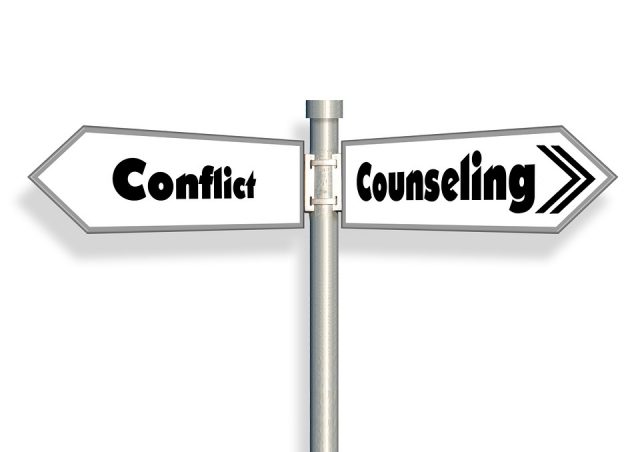Working with people from diverse backgrounds and different working styles, conflict becomes inevitable. Although, petty conflicts can be healthy and constructive, yet biggie contentious conflicts can fetter the growth and cause disturbance of peace and emotional well-being. Who would want that? No one! That’s why you need conflict resolution.
Before learning about the methods of conflict resolution, comprehend what is conflict resolution in the first place. Following which we will consider the causes and effects of conflict resolution.
So, let’s configure the conflict! Come along now!
WHAT IS CONFLICT RESOLUTION?
Conflict resolution refers to the process of coming at practical solutions to a disagreement (could be personal, professional, financial, emotional, or political) between two parties. These could be between managers, between manager and employee, or between employees.
There are myriad methods to resolve any conflict depending upon the gravity of the situation or conflict. Before jumping on to these methods let’s take a look at what are the causes of conflicts and why do we need conflict resolution?
CAUSES OF CONFLICTS

There are innumerable routes to success, but not everyone will follow the same route. The same is the case in the workplace, people have diversified opinions and ways to reach the same goal. When two parties try to attain a shared goal, chances are they don’t settle on the same route. That is one scenario leading to conflict.
At other times- miscommunications, organizational mismanagements, vague job roles, or even unmatched personality or values could end up in disagreements and altercations. Further, when the spat is expressed in terms of insults, noncooperation, denouncements, bullying, or sometimes extreme reprimands- paves the way for longstanding conflicts at the workplace. Doesn’t sound good, yes?
WHY DO YOU NEED CONFLICT RESOLUTION?
While conflict is normal and unavoidable at any workplace, yet unresolved conflicts can exacerbate the devious level of resentment. What could be the negative effects of conflicts? Work disruptions, absenteeism, dwindling productivity, project failure, termination, and what not!
All of this together could further render emotional stress and mental ability of people involved. Thus, to avert such inconspicuous debacles at the workplace, conflict resolution strategies are a must! As an employee, you should acquaint yourself with the conflict resolution methods to maintain the peacefulness of your work and mind.
WHAT ARE THE FIVE METHODS OF CONFLICT RESOLUTION?
Now, as you already know that conflicts do you more harm than good, undeniably you would want to learn methods to conflict resolution, wouldn’t you?

Then, here are the 5 methods of conflict resolution:
1.CIRCUMSPECT THE CONFLICT
Any conflict develops between two parties, that is to say, there are two sides to the coin. Walking to the heart of the problem, both parties should put on the table what are their perspective, interests, and roles. Though, it’s easier to consider your side of the scales, taking into account the viewpoints of the other party are as much important as your opinions. Hence, actively listen to what the other party has to say and offer. Make sure you don’t interrupt or cut the talk in between. This brings us to the next point.
2. DISCUSS CONFLICTING COMPONENTS
Conflicts backed up by twinges of anger often emasculate the thinking power of people, therefore before getting to the resolving table- make sure both the parties are tranquilized. As opinions of both parties lie on the table, analyze the pros and cons of the conflicting components. What are the things that stand in contrast? What are the disagreements and agreement factors? Is there a chance of mid-game?
3. BRAINSTORM POSSIBLE SOLUTIONS
Once both the parties are clear with the scenario and know the interests of the facing party, together try to convene ideas that trail towards resolutions. With an open mind, take into consideration the perspectives of both the parties. Look out for common interests that can lead to a compromise and win-win situation for both parties.
Brainstorm as many solutions as you can before putting a finger on any one of them. Also, be firm not to criticize or hinder the brainstorming session. Let the solutions freely flow through the mind to the table.
Remember, not to let your emotions sway your decisiveness.
4. PICK A SOLUTION
After the brainstorming session, you will need to determine which resolution is better and sustainable. Review your ideas for brainstorming. Star the best thoughts – these are what you will be dealing with during the process of conflict resolution. Set a time to chat about them and decide which is the best idea.
The goal here is how can you leverage the strengths and resources of both parties to get the best outcome for everyone. Be prudent and pick the best resolution.
5. ASK FOR MEDIATION
Mediation means the involvement of a third-party member(mediator) who is not a representative of any conflicting parties. The presence of an unbiased mediator validates the procedure and makes sure the process moves on in a smooth and subtle manner. He or she should be a person that both the part trust and hails reliable. The mediator supports both the parties and tries to ascertain a common solution towards a shared goal without resentment.
And voila, conflict is resolved! Congratulations you have averted a catastrophic danger that could have hampered your emotional well-being as well as the productivity of the business.
This brings the end of this Blog. Thanks for reading. We really appreciate your time.
Do visit our page www.zigya.com/blog for more interesting articles
We would love to hear from you. Please share your feedback and comments below.
Keep Reading! Cheers!
Zigya Academy
BEING RELEVANT
